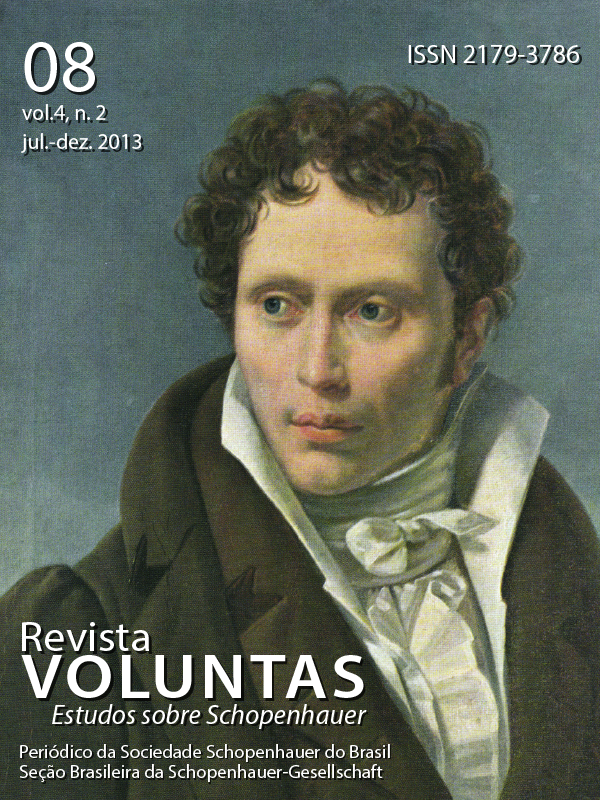Schopenhauer and the problem of the movement: will and causality. An essay about the chapter “Physical Astronomy” of “On the will in nature”
DOI:
https://doi.org/10.5902/2179378634156Keywords:
Schopenhauer, Movement, Thales of MiletusAbstract
The text “Physical Astronomy” presents the central idea of Schopenhauer philosophy, expressed in movement terms. Dealing with this problem of movement at its origin, we can observe important resemblances between philosophers like Thales of Miletus and our author. All in all, Schopenhauer suggests that there are not two origins of the movement, one internal and own, which belongs to the man, and other external and causal, which acts in the rest of the things, but an only source of movement that joins the both properties and which appears equally in every being. This idea breaks down the barrier between human and natural things, and according to the first philosophers we can say that “all is one”.Downloads
References
GARCÍA GUAL, Carlos. Historia de la filosofía antigua. Madrid: CSIC, 2004.
LOS FILÓSOFOS PRESOCRÁTICOS. Obras I. Trad. Conrado Eggers Lan, Victoria E Juliá, Néstor Luis Cordero y Ernesto La Croce. Barcelona: RBA Coleccionables, 2007.
NIETZSCHE, Friedrich. La filosofía en la época trágica de los griegos. Trad. Luis Fernando Moreno Claros. Madrid: Valdemar, 2003.
PLATÓN. Diálogos III. Trad. C. García Gual, M. Martínez Hernández y E. Lledó Íñigo. Barcelona: RBA Coleccionables, 2007.
SCHOPENHAUER, Arthur. Sobre la voluntad en la naturaleza. Trad. Miguel de Unamuno. Madrid: Alianza, 2009.
SCHOPENHAUER, Arthur. El mundo como voluntad y representación. Trad. Pilar López de Santamaría. Madrid: Trotta, 2009.
SCHOPENHAUER, Arthur. Los dos problemas fundamentales de la ética. Trad. Pilar López de Santamaría. Madrid: Siglo XXI, 2009.
Downloads
Published
How to Cite
Issue
Section
License
The submission of original manuscripts to this journal implies the transference, by the authors, of the copyrights for printed and digital publication. The copyrights of a published manuscript belong ultimately to the author, and only the copyright for its first publication is reserved to the journal. Authors may only use the same results in other publications explicitly indicating this journal as the medium of the original publication.
Licence
Attribution-NonCommercial-ShareAlike 4.0 International (CC BY-NC-SA 4.0) - This license lets others remix, tweak, and build upon your work non-commercially, as long as they credit you and license their new creations under the identical terms.






